Abstract
A study of the microbial utilization of long-chain methyl ketones was under-taken. In general, enrichment culture experiments revealed that soil microorganisms capable of utilizing these compounds as growth substrates are ubiquitous. Gram-negative, rod-shaped bacteria were the prominent organisms exhibiting this capability. In particular, a strain of Pseudomonas isolated from soil degraded 2-tridecanone into several products that were recovered from cell-free culture fluid. These products were identified by gas-liquid chromatography as 2-tridecanol, 1-undecanol, 1-decanol, and undecanoic acid. A large amount of the substrate was converted to 1-undecanol. This compound was characterized further by classical methods of organic analysis. Unequivocal identification of 1-undecanol has established that some unique mechanism that involves subterminal oxidation must exist to degrade 2-tridecanone. No such mechanism has been reported for the biological degradation of long-chain, aliphatic, methyl ketones. A pathway for utilization of 2-tridecanone was proposed that is consistent with, but not confirmed by, the data presented.
Full text
PDF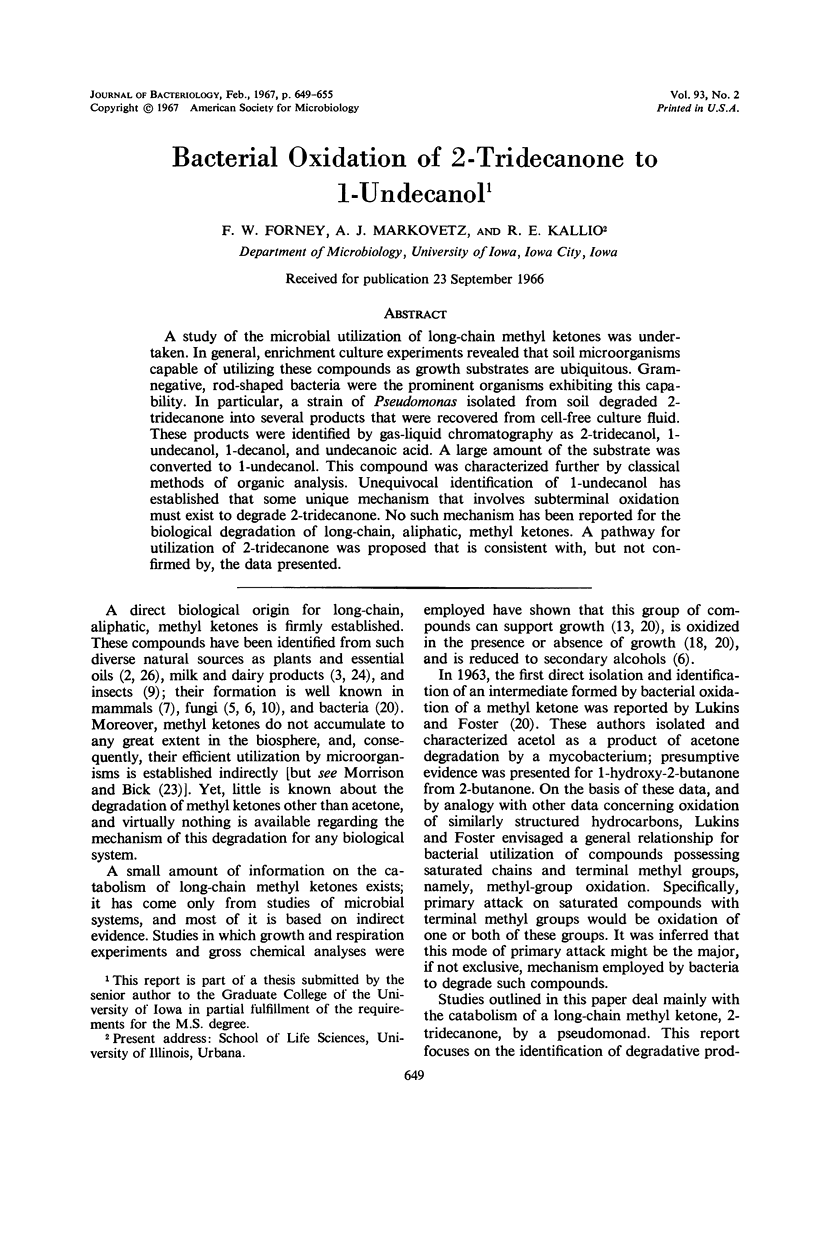
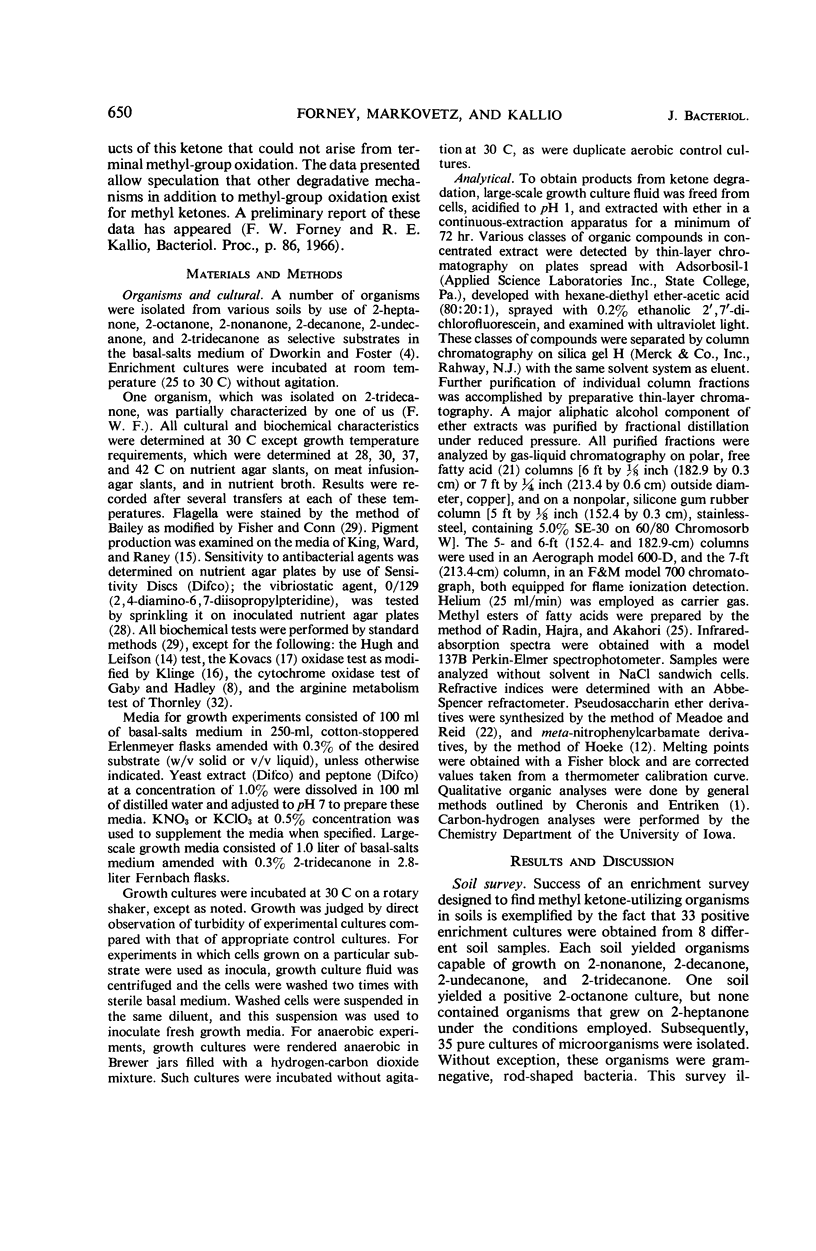
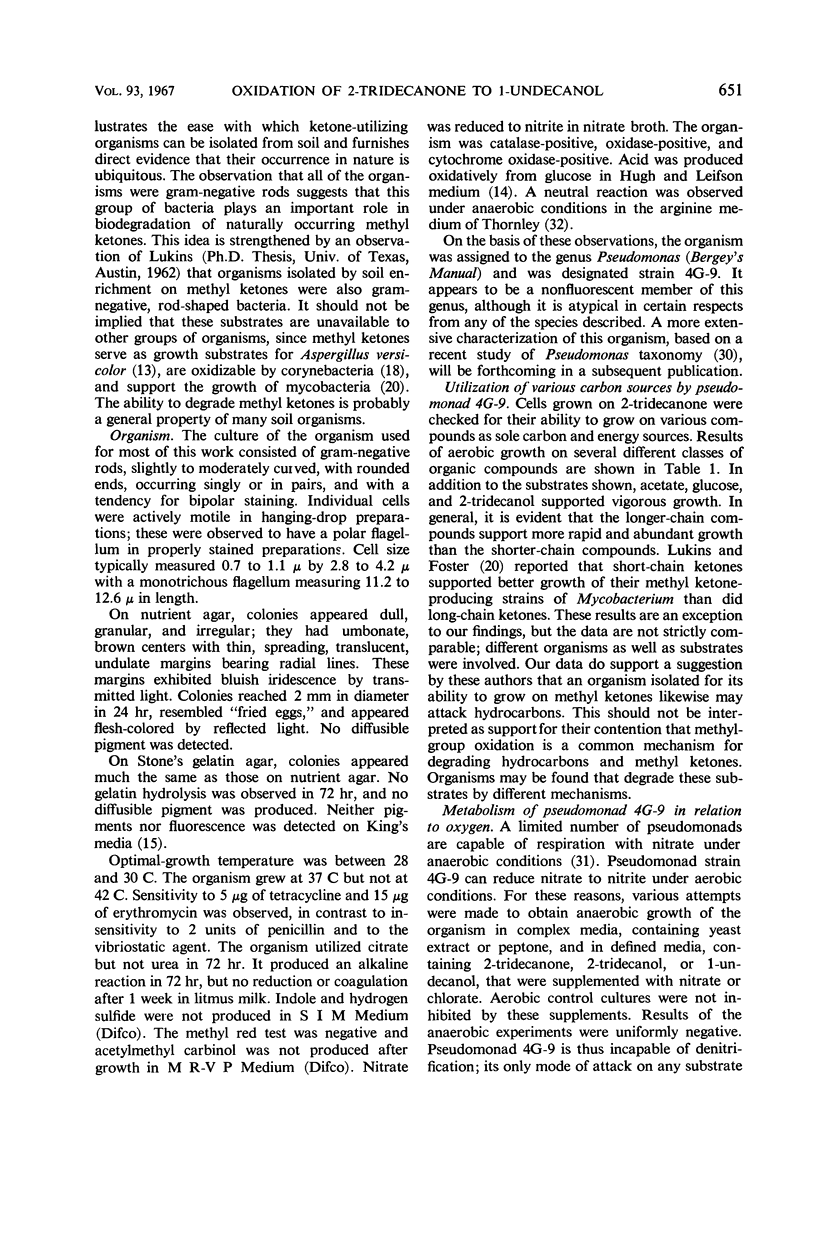
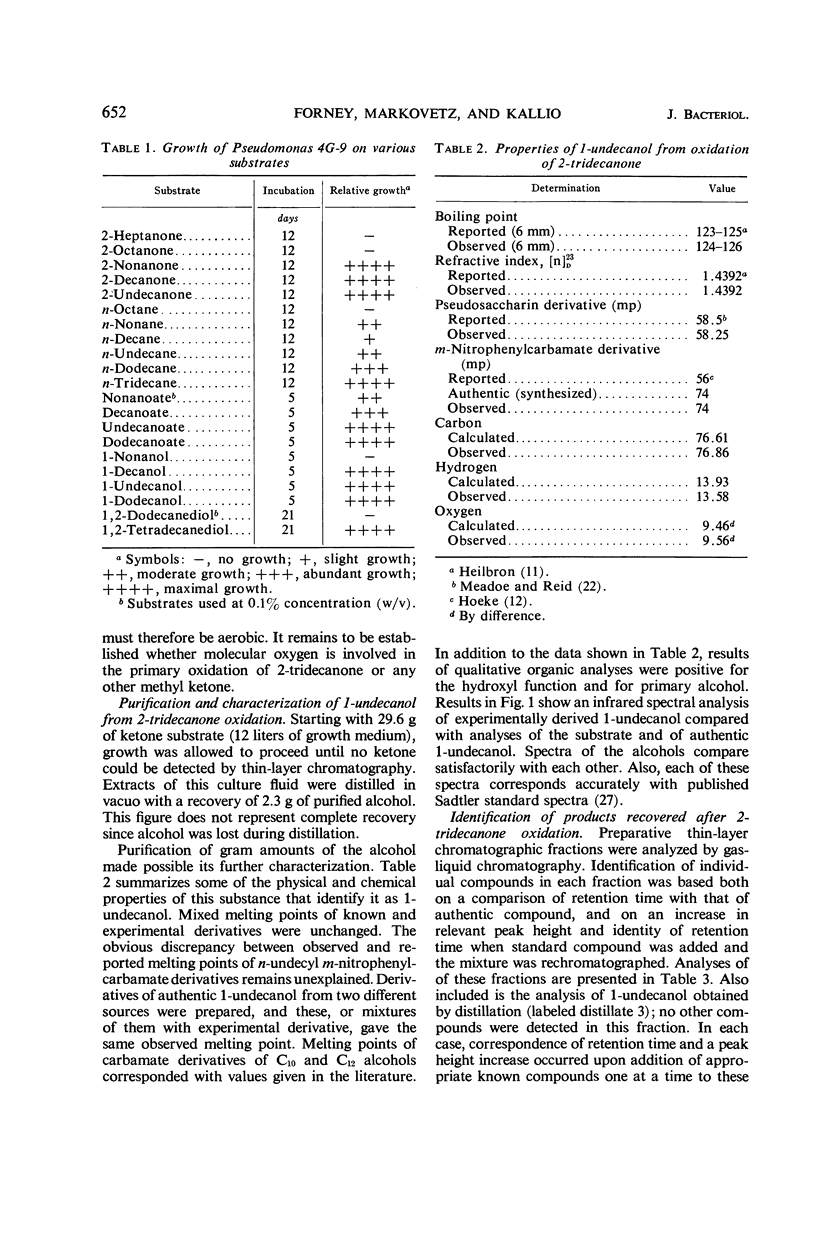
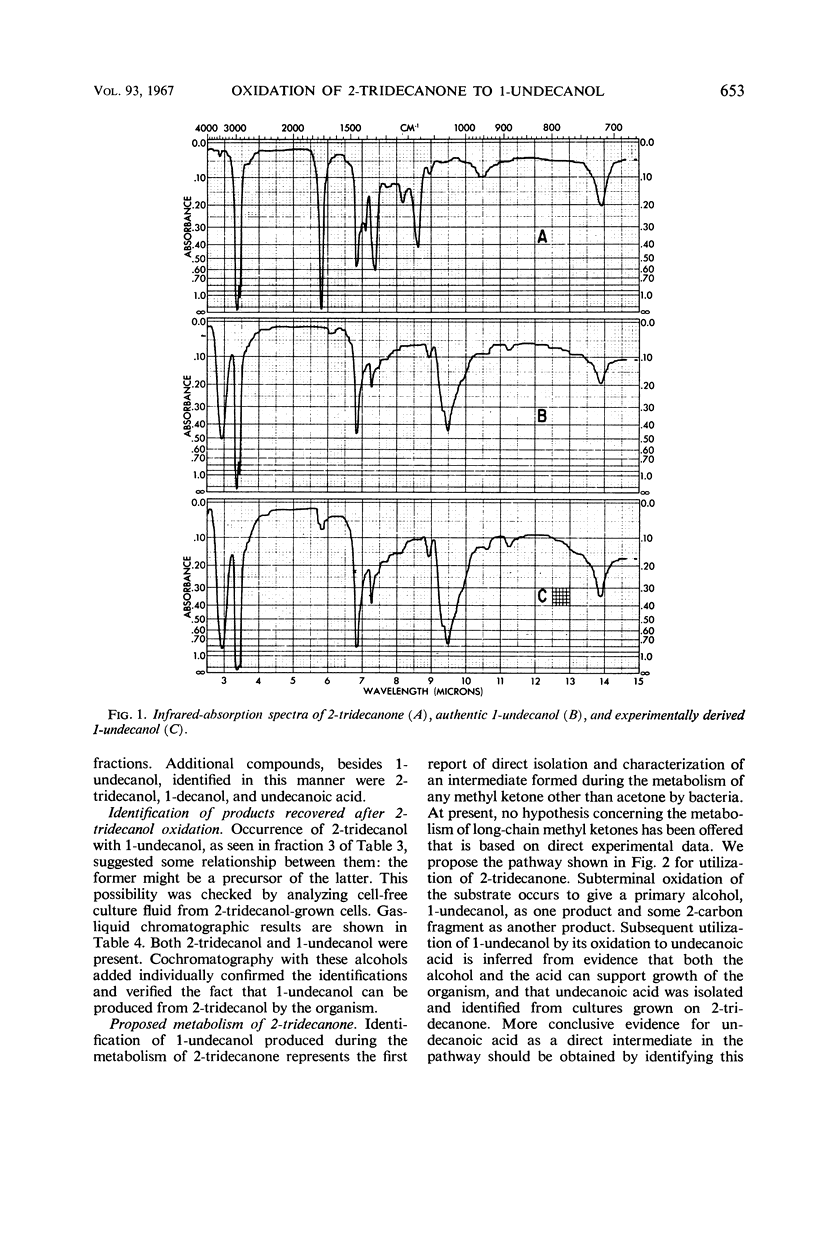
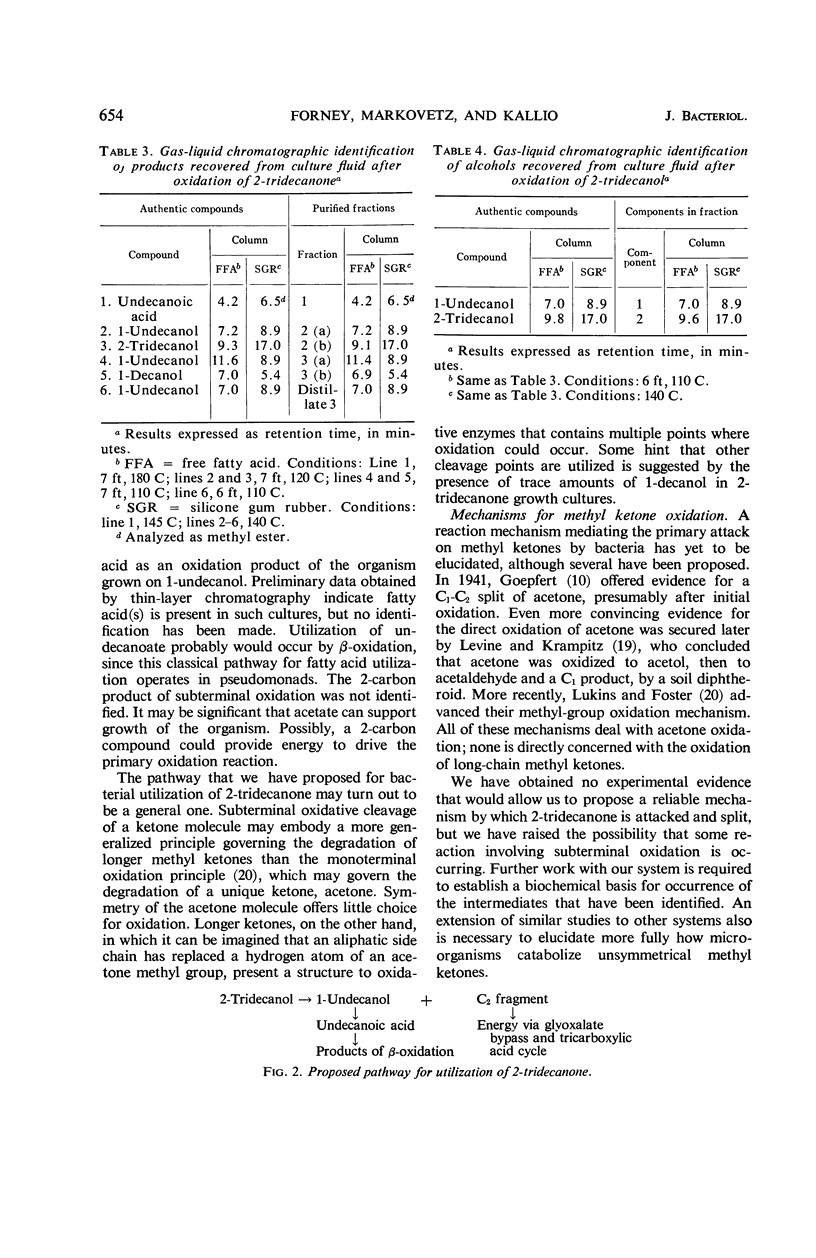
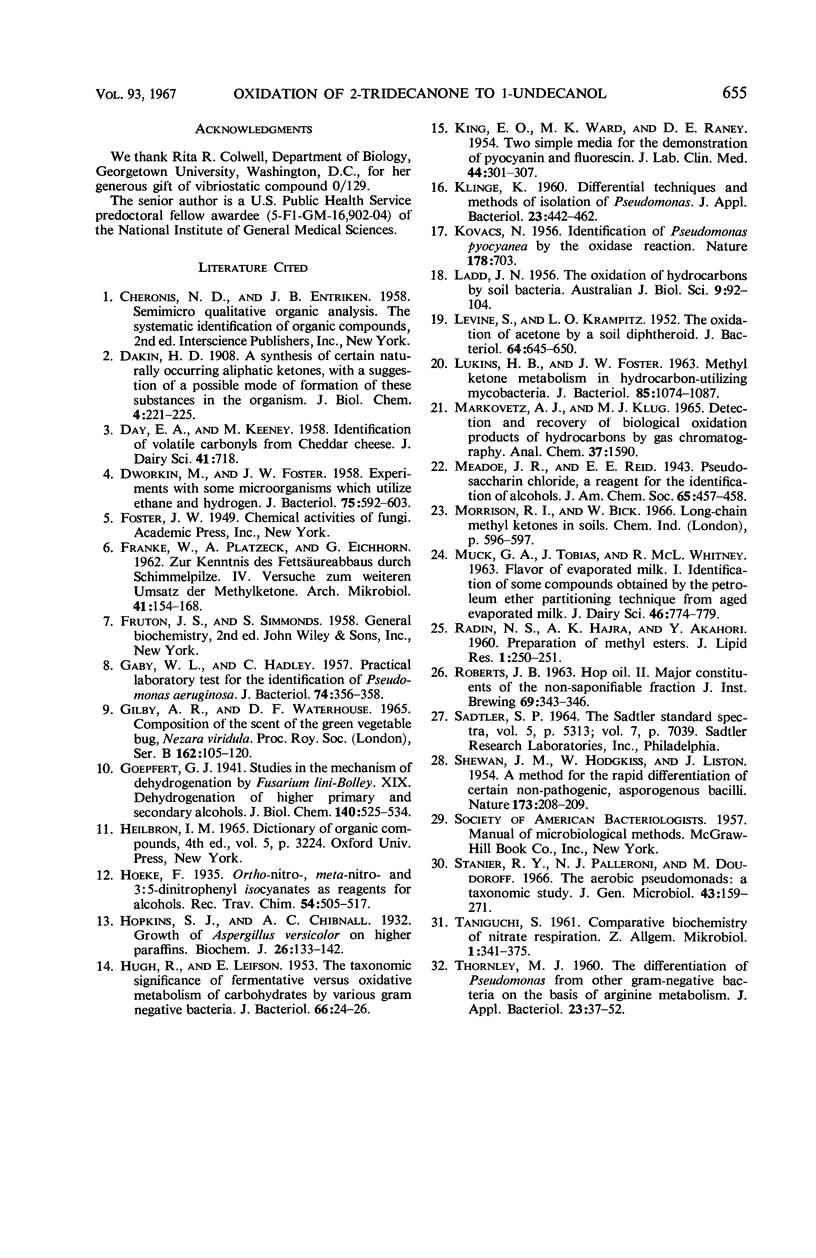
Selected References
These references are in PubMed. This may not be the complete list of references from this article.
- DWORKIN M., FOSTER J. W. Experiments with some microorganisms which utilize ethane and hydrogen. J Bacteriol. 1958 May;75(5):592–603. doi: 10.1128/jb.75.5.592-603.1958. [DOI] [PMC free article] [PubMed] [Google Scholar]
- FRANKE W., PLATZECK A., EICHHORN G. [On data on fatty acid degradation by molds. IV. Experiments on further transformation of methyl ketones]. Arch Mikrobiol. 1962;41:154–168. [PubMed] [Google Scholar]
- GABY W. L., HADLEY C. Practical laboratory test for the identification of Pseudomonas aeruginosa. J Bacteriol. 1957 Sep;74(3):356–358. doi: 10.1128/jb.74.3.356-358.1957. [DOI] [PMC free article] [PubMed] [Google Scholar]
- HUGH R., LEIFSON E. The taxonomic significance of fermentative versus oxidative metabolism of carbohydrates by various gram negative bacteria. J Bacteriol. 1953 Jul;66(1):24–26. doi: 10.1128/jb.66.1.24-26.1953. [DOI] [PMC free article] [PubMed] [Google Scholar]
- Hopkins S. J. Growth of Aspergillus versicolor on higher paraffins. Biochem J. 1932;26(1):133–142. doi: 10.1042/bj0260133. [DOI] [PMC free article] [PubMed] [Google Scholar]
- KING E. O., WARD M. K., RANEY D. E. Two simple media for the demonstration of pyocyanin and fluorescin. J Lab Clin Med. 1954 Aug;44(2):301–307. [PubMed] [Google Scholar]
- KLINGE K. Differential techniques and methods of isolation of Pseudomonas. J Appl Bacteriol. 1960 Dec;23:442–462. doi: 10.1111/j.1365-2672.1960.tb00216.x. [DOI] [PubMed] [Google Scholar]
- KOVACS N. Identification of Pseudomonas pyocyanea by the oxidase reaction. Nature. 1956 Sep 29;178(4535):703–703. doi: 10.1038/178703a0. [DOI] [PubMed] [Google Scholar]
- LEVINE S., KRAMPITZ L. O. The oxidation of acetone by a soil diphtheroid. J Bacteriol. 1952 Nov;64(5):645–650. doi: 10.1128/jb.64.5.645-650.1952. [DOI] [PMC free article] [PubMed] [Google Scholar]
- LUKINS H. B., FOSTER J. W. METHYL KETONE METABOLISM IN HYDROCARBON-UTILIZING MYCOBACTERIA. J Bacteriol. 1963 May;85:1074–1087. doi: 10.1128/jb.85.5.1074-1087.1963. [DOI] [PMC free article] [PubMed] [Google Scholar]
- RADIN N. S., HAJRA A. K., AKAHORI Y. Preparation of methyl esters. J Lipid Res. 1960 Apr;1:250–251. [PubMed] [Google Scholar]
- SHEWAN J. M., HODGKISS W. A method for the rapid differentiation of certain nonpathogenic, asporogenous bacilli. Nature. 1954 Jan 30;173(4396):208–209. doi: 10.1038/173208b0. [DOI] [PubMed] [Google Scholar]
- Stanier R. Y., Palleroni N. J., Doudoroff M. The aerobic pseudomonads: a taxonomic study. J Gen Microbiol. 1966 May;43(2):159–271. doi: 10.1099/00221287-43-2-159. [DOI] [PubMed] [Google Scholar]


